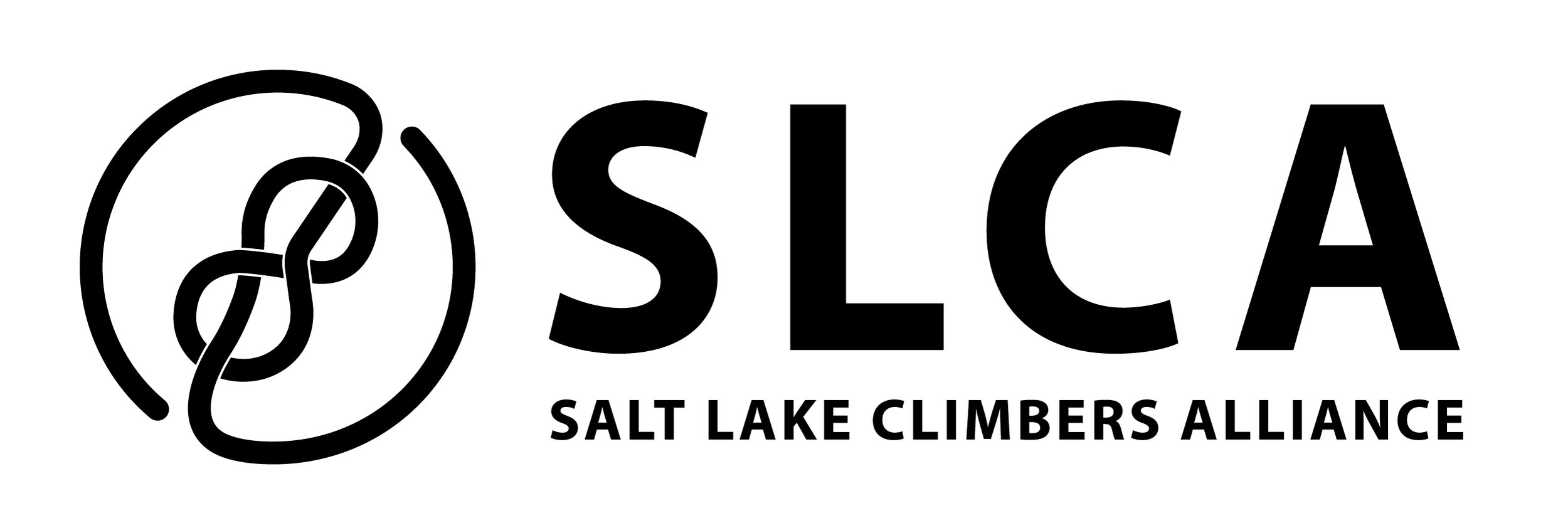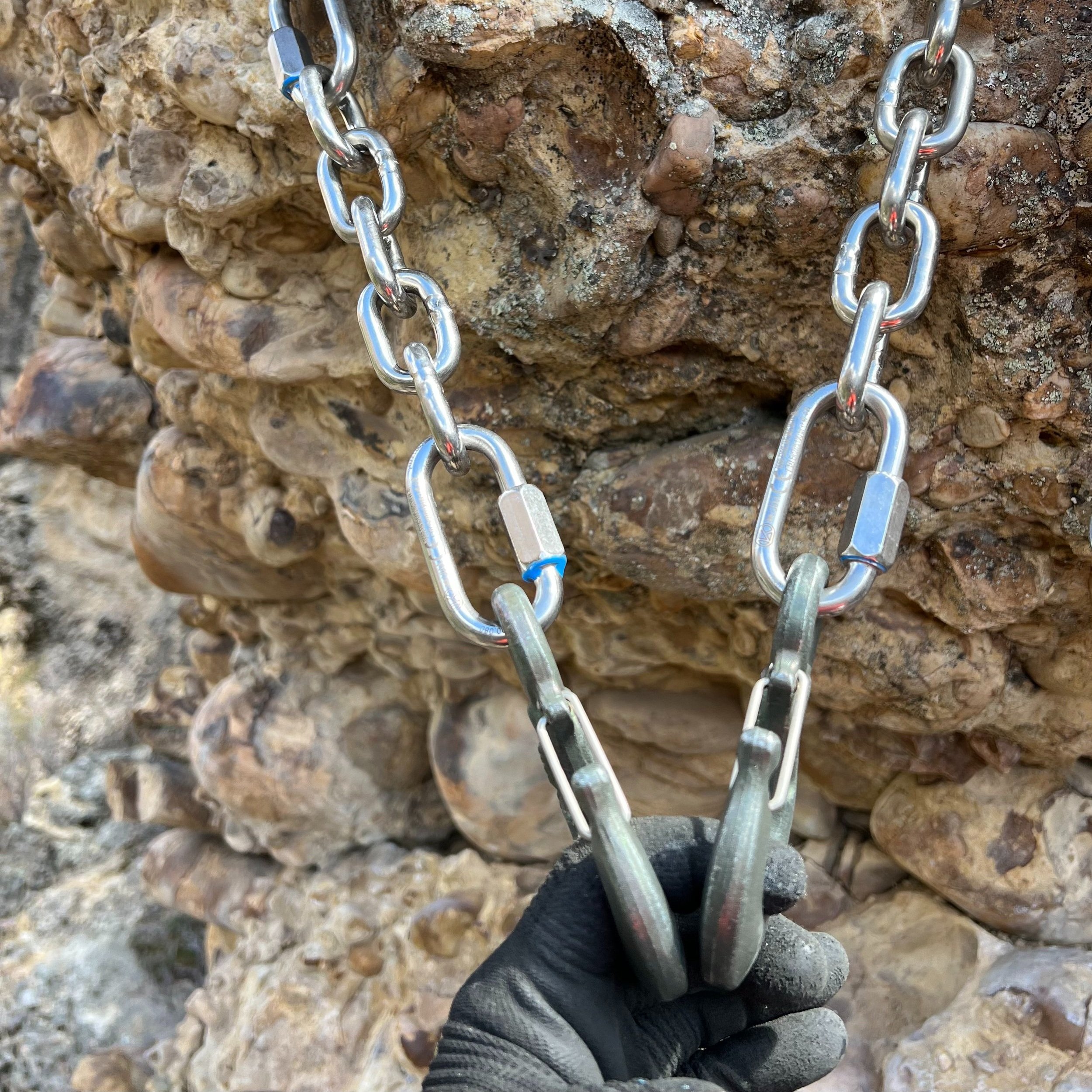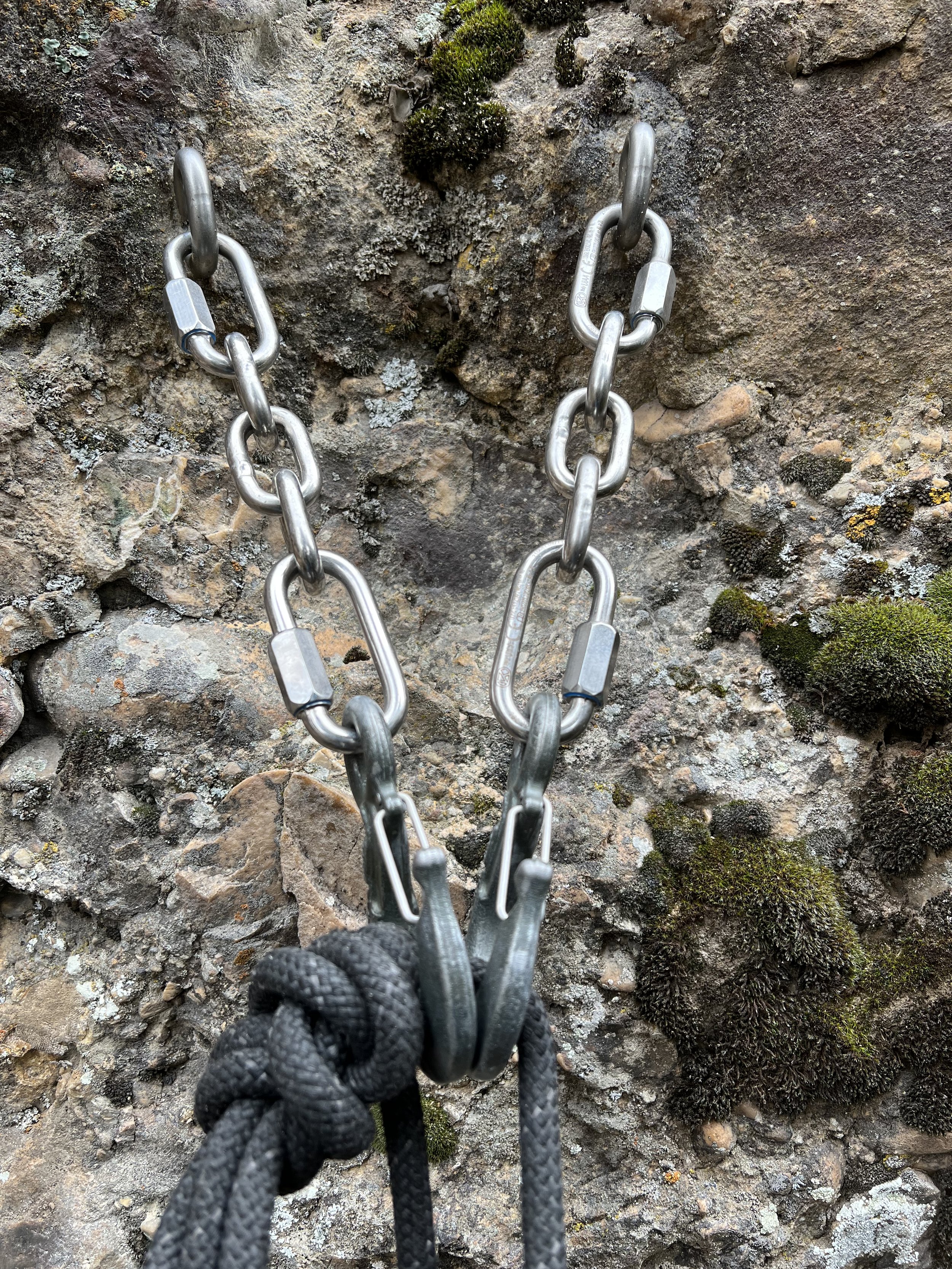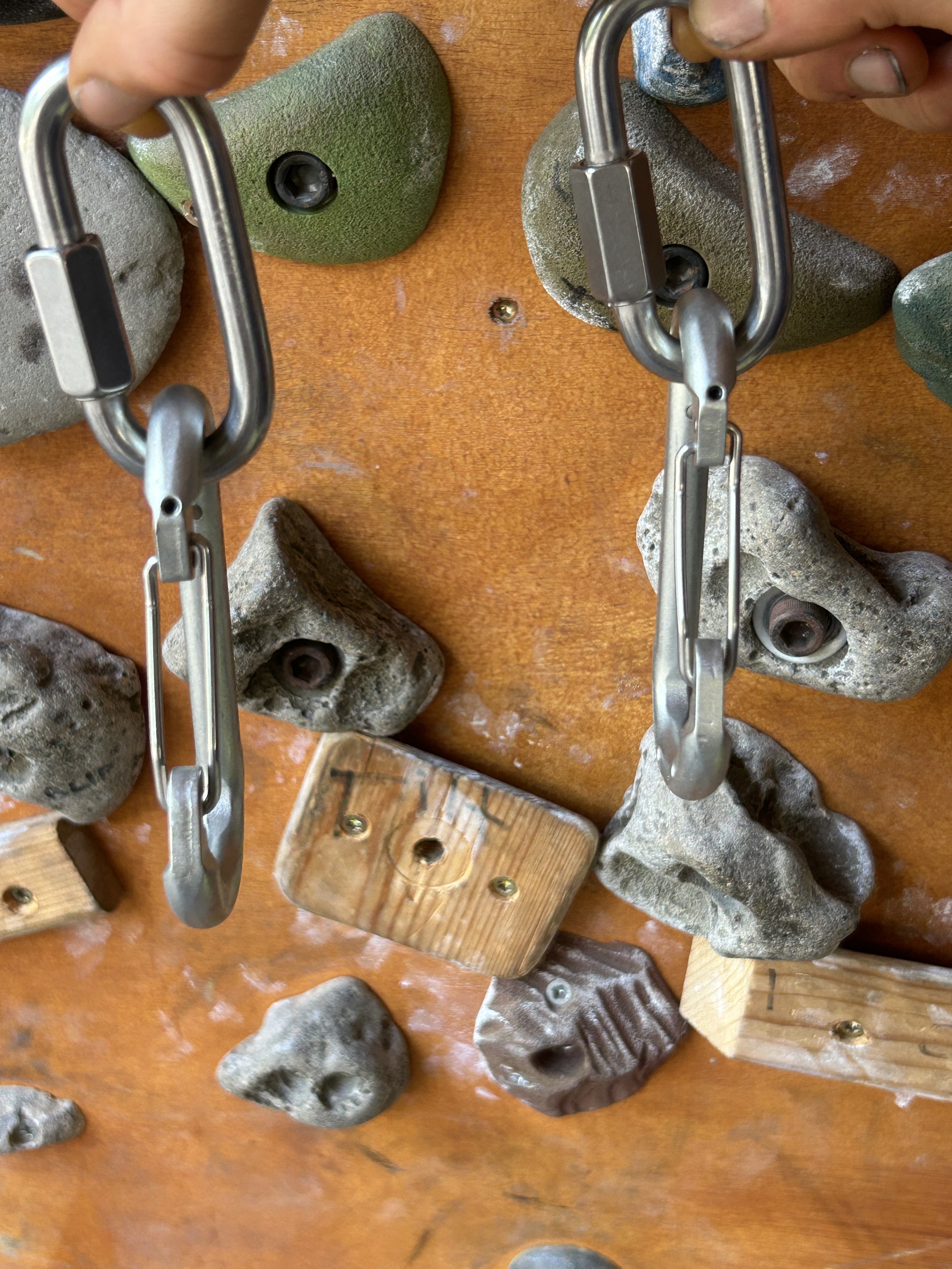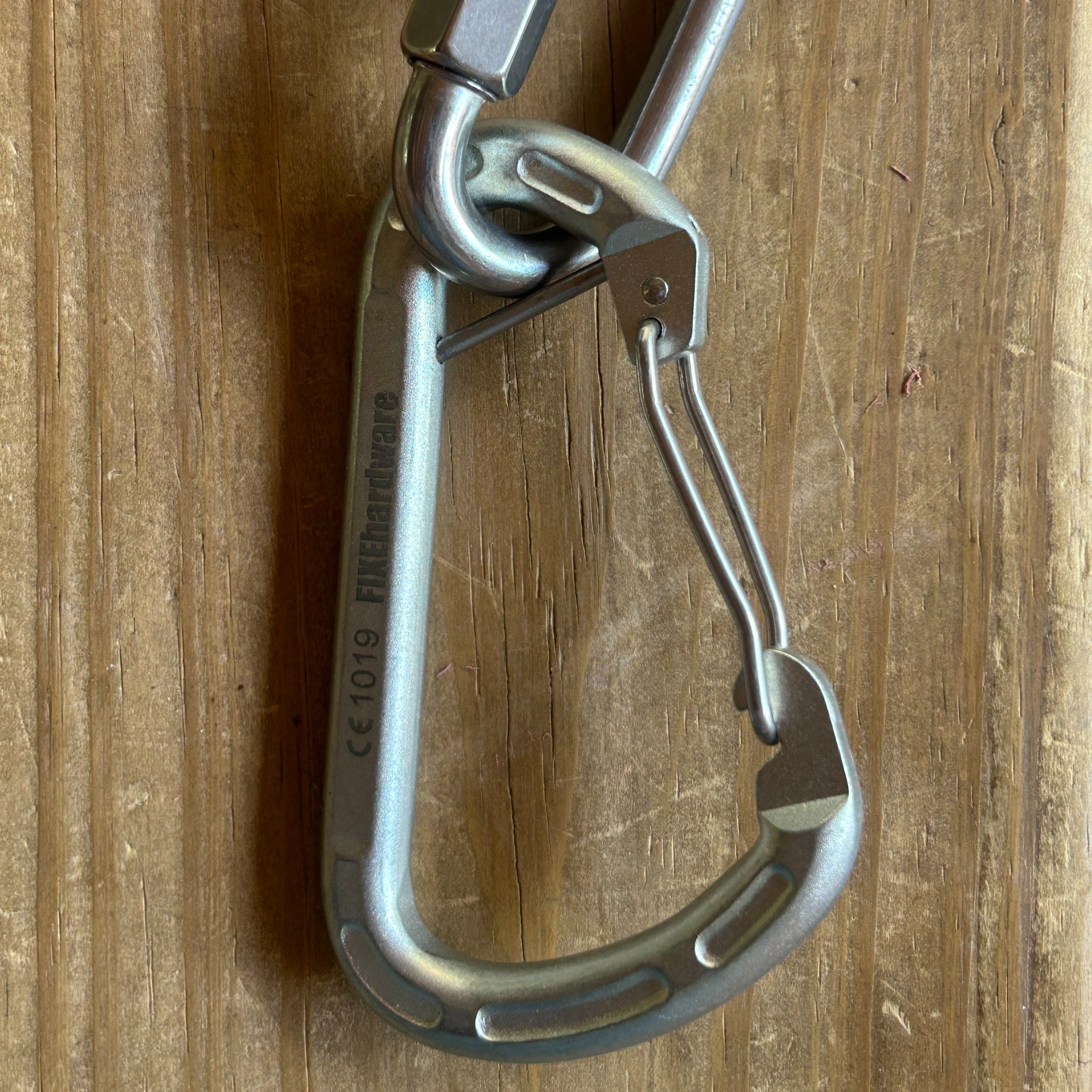PSA: Mussy Hooks & Lower offs
Within the last few years, there has been a really big push to standardize lower-offs on single pitch routes in the United States. The leader of this effort, American Safe Climbing Association (ASCA) donated 5,500 lower offs to 22 different states in 2022. That's up to 2,250 routes that are now safer to the user. The Wasatch is no different. The Salt Lake Climbers Alliance has been installing these lower offs at popular crags since 2014.
According to the American Alpine Club “belay miscommunication and error at the top of single-pitch routes is one of the leading causes of accidents and fatalities.” The installation of lowers offs try to solve this problem by “allowing fast, efficient and safe descents without to untie or retie the lead line.” (ASCA). It is not uncommon for climbers of all abilities to be unsure on how to properly use these lower offs. To fully understand the properly use these lower off, please consider the following information from the ASCA.
PLEASE NOTE
The SLCA strongly recommends that climbers top rope off their own personal equipment. If you, anyone in your party or another climber is unsure how to build an anchor for top roping, please top rope directly though the mussy hooks. Then, seek professional instruction to learn the correct setup for future climbs.
HOW TO CORRECTLY USE LOWER OFF ANCHORS
Anchor hooks and many other lower-offs are not designed to be climbed above. Do not climb above anchors when using only lower offs for protection.
Do not clip lower off anchors from above and down climb to them when attempting to set up a toprope. This is dangerous and can result in accidentally unclipping your rope from the anchor.
In 2023 a tragic accident occurred killing one individual. This was due to a combination of factors relating to the above statement. To understand what happened, an analysis of the accident and how to prevent this, please watch these two videos by Karsten Delap, IFMG Mountain Guide with Pisgah Climbing School.
When toproping on any fixed anchors, only the last climber should lower directly on the lowering hardware to increase the working life of the wear part. Use personal gear to toprope up until the final climber lowers.
When the final climber reaches the anchor they clip into the steel hooks/carabiners, get tension from their belayer, and then clean personal gear that was used for toproping before lowering.
If you are leading the extension to a route with lower offs installed at the first anchor, clip a quickdraw to one of the bolt hangers of the anchor as you pass, not one of the lower offs.
If there are lower offs on the first pitch of a multi-pitch route you should build your anchor to climb the next pitch above by clipping the bolt hangers or quicklinks with personal gear, not the lower off.
Lower off anchors on popular single pitch routes help to address many common accidents that arise with complacency and high traffic, but still require climbers to pay close attention to their systems. Climbing comes with high consequences if mistakes are made. Always understand the system you are using for protection and weight/re-inspect before you transfer to a new protection system.
Rock climbing is an inherently dangerous activity and we encourage anyone who participates to obtain the appropriate education and training in order to minimize accidents. We also encourage participants to consult resources including but not limited to guiding outfitters, SAR, Utah Avalanche Center, ranger stations, and weather reports. Nevertheless and although tragic, accidents can happen even when the participants have the proper training and have consulted authorities on conditions. Participants in outdoor climbing are assuming a risk, just as they do in skiing, mountain biking, kayaking, or other outdoor activities. Anchors once maintained by the SLCA are not guaranteed to be in the same state or condition as when they were maintained.
